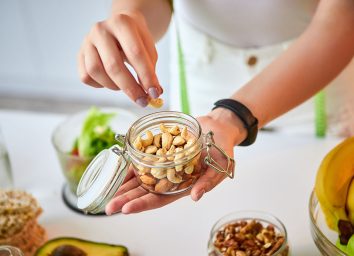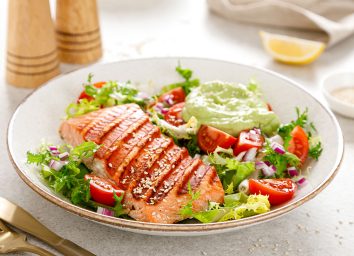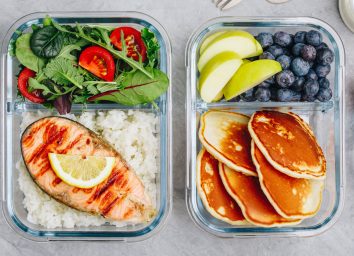Eating Habits for Weight Loss That Experts Say Actually Work
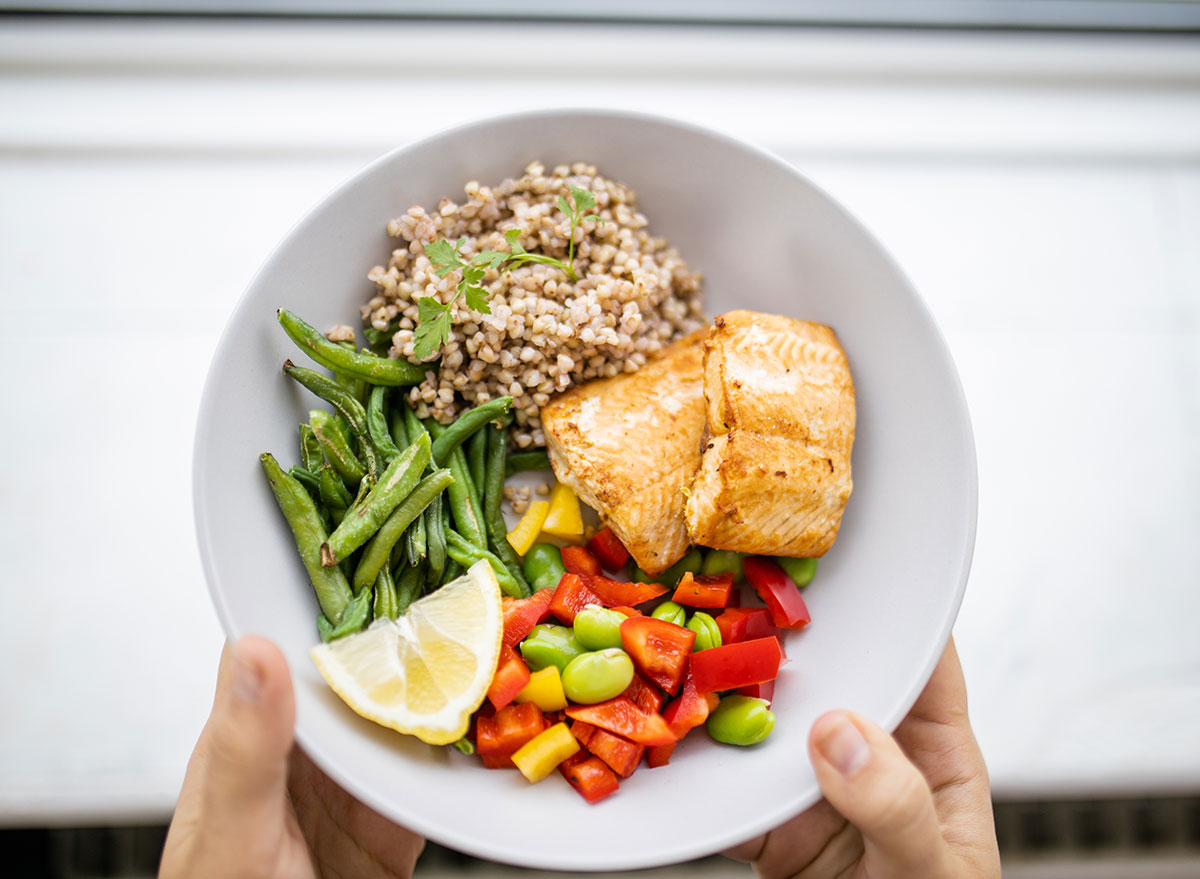
As much as we all might wish for a quick fix for shedding pounds, the reality is that weight loss is far more successful when it’s the result of healthy habit formation. Sustainable practices you can use anywhere, anytime (and keep using as the days and years go by) are the real secret weapon for slimming down.
Wondering where to start with small changes that add up? We asked registered dietitians for the habits that actually work—not only for weight loss, but also for keeping it off long term. Here are their top eight tips. And once you’ve digested these, check out the Best Foods for Weight Loss, According to Dietitians.
Amp up the protein.

The daily value for protein is set at 50 grams, but this is a baseline to sustain basic health—not a perfect target for weight loss. In fact, the Dietary Reference Intake for protein is 0.36 grams per day (54 grams for a 150-pound person or 72 grams for a 200-pound person), and many dietitians advise going well beyond these numbers for weight loss.
While it’s possible to overdo it on protein, this doesn’t happen as often as you might think.
“Though it’s often said that Americans consume too much protein on average, I rarely see this in practice,” says Sharon Puello, MA, RD, CDN, CDCES.
Protein is known to be satiating—even more so than carbs or fat. So for weight loss, don’t be afraid to amp up this micronutrient in your daily diet.
“Make protein-rich foods a substantial part of your meals and you’ll definitely see result,” says Puello.
Limit your sugar intake.

We all know excess sugar is bad news for health. Not only does a high-sugar diet cause cavities and increase your risk of heart disease, but it’s also a major red flag for weight gain.
According to a 2019 study, the U.S. population consumes over 300% of the recommended daily amount of added sugar—which likely promotes the development of obesity.
“Note the amount of added sugar in your sweet treats,” says Jinan Banna, PhD, RD. “Added sugar is found in numerous foods, from bread to sauces to dessert foods to cereals. This contributes extra calories without satisfying you, so you may easily overeat. Check your food labels to help with weight loss.”
Use your hand to guide portion sizes.
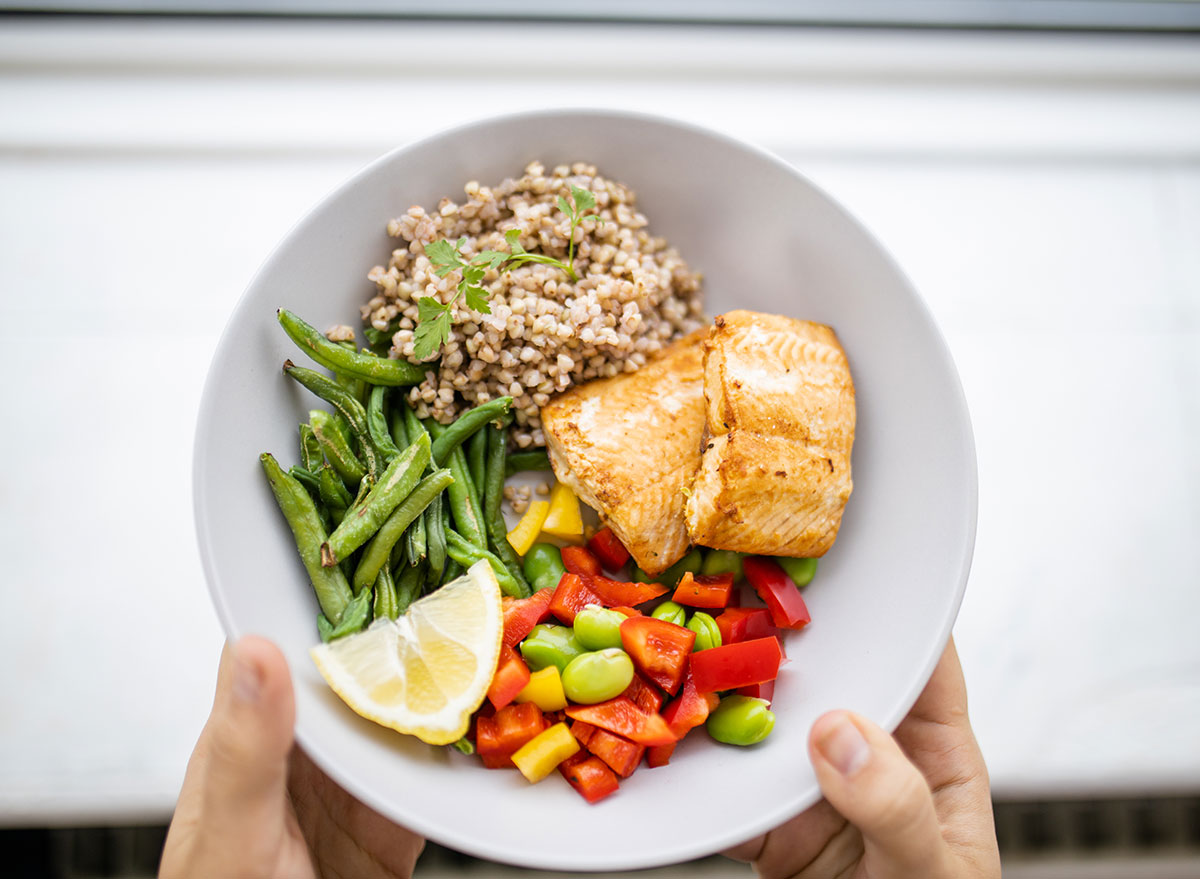
Here’s a handy tip—literally! When trying to determine the right portion sizes for certain foods, use your hand as a guide. As a general rule, a serving size of veggies should be as large as your fist, a serving of protein as large as your palm, a serving of fat as large as the tip of your thumb.
“This way, you always have control over how much you are eating, even on the go or at a restaurant,” says Emma Backes, RDN, LD. “Also, your hand is unique to yourself, so it will be a better indicator of what you specifically need.”
Along with this nifty trick, here are 18 Easy Ways to Control Your Portion Sizes.
Load your plate with veggies.

On the other side of the satiation spectrum from sugar, you’ll find vegetables. Loading up on veggies is a go-to tip many dietitians advise for weight loss.
“Vegetables add fiber, which can help keep you fuller longer,” says out Tabitha Nicholas, MS, RDN, LDN.
In addition to fiber, veggies provide important vitamins and minerals, and even a little hydration. When weight loss is your goal, try filling at least half your plate with a rainbow of veggies—like these low-carb options.
Focus on fiber.
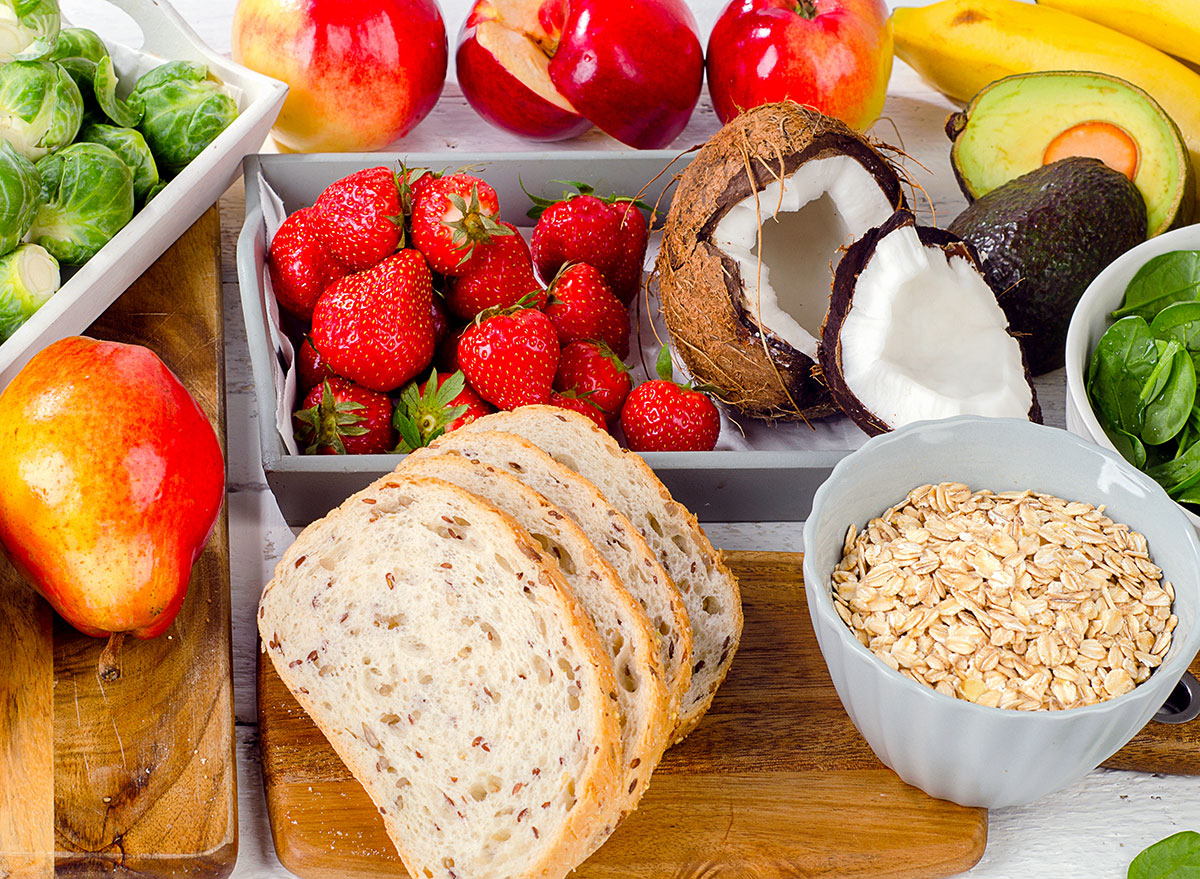
Diets that leave you hungry might work in the short term, but eventually, even the most iron-willed dieter will be overcome with hunger. That’s why staying full throughout the day matters big-time on a successful weight loss journey. Another key to staying satiated? Fiber.
“I like to have my clients focus on fiber to keep them full,” says Jen Scheinman, MS, RDN. “I give them a list of high-fiber foods and ask them to slowly work their way up to 25 grams a day.”
Don’t miss our guide to 20 Different Ways to Eat 28 Grams of Fiber a Day!
Eat real meals—not just snacks.
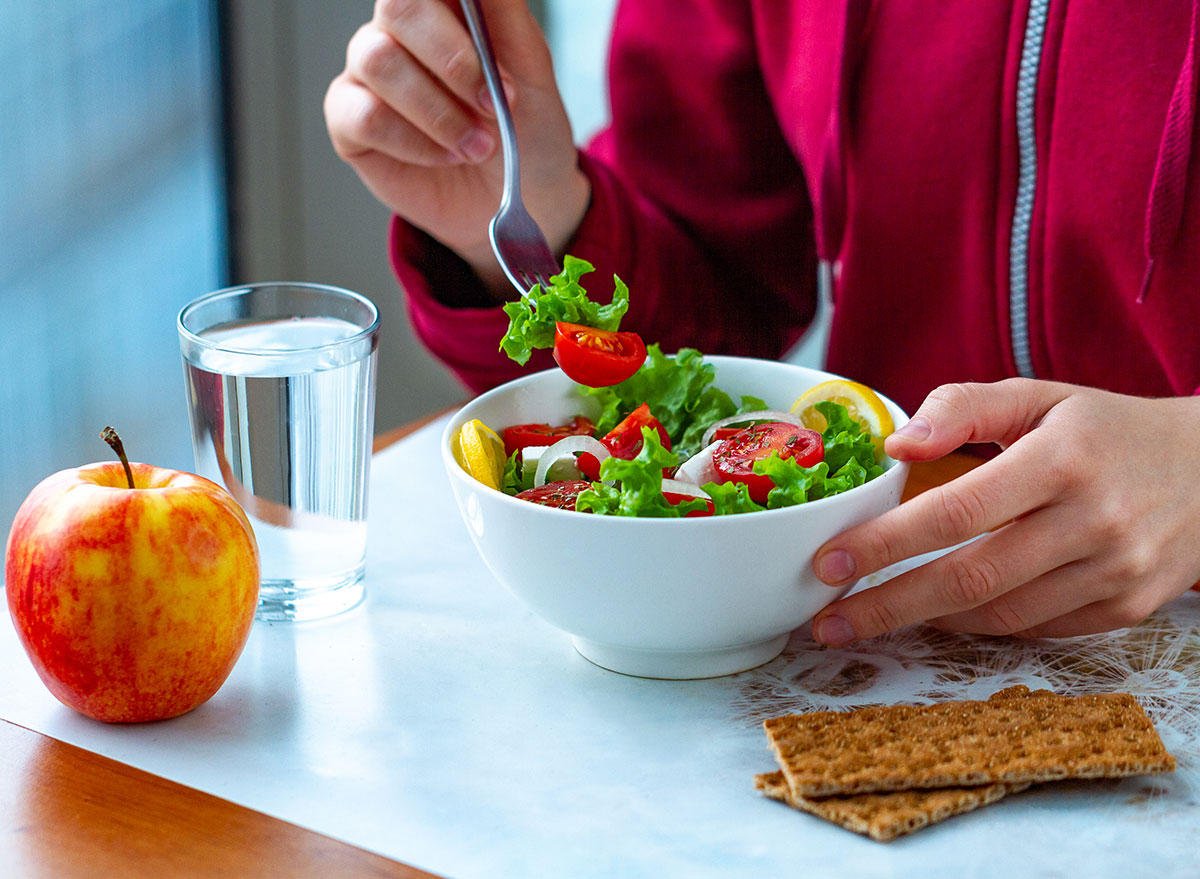
For some people, the “six small meals per day” concept can work well for getting to a healthy weight—and there’s a wide world of snacks, bars, and shakes out there to support a diet of mini-meals. Still, sitting down to three square meals a day has surprising benefits for weight loss.
“I recommend eating actual meals instead of tiny snacks throughout the day,” says Kitty Broihier, MS, RD. “Eating real meals not only helps with hunger because you are eating more food, it also makes it more likely you’ll eat something protein-containing and nutritious. Skimping on meals in the name of calorie savings can backfire.”
Eat mindfully.
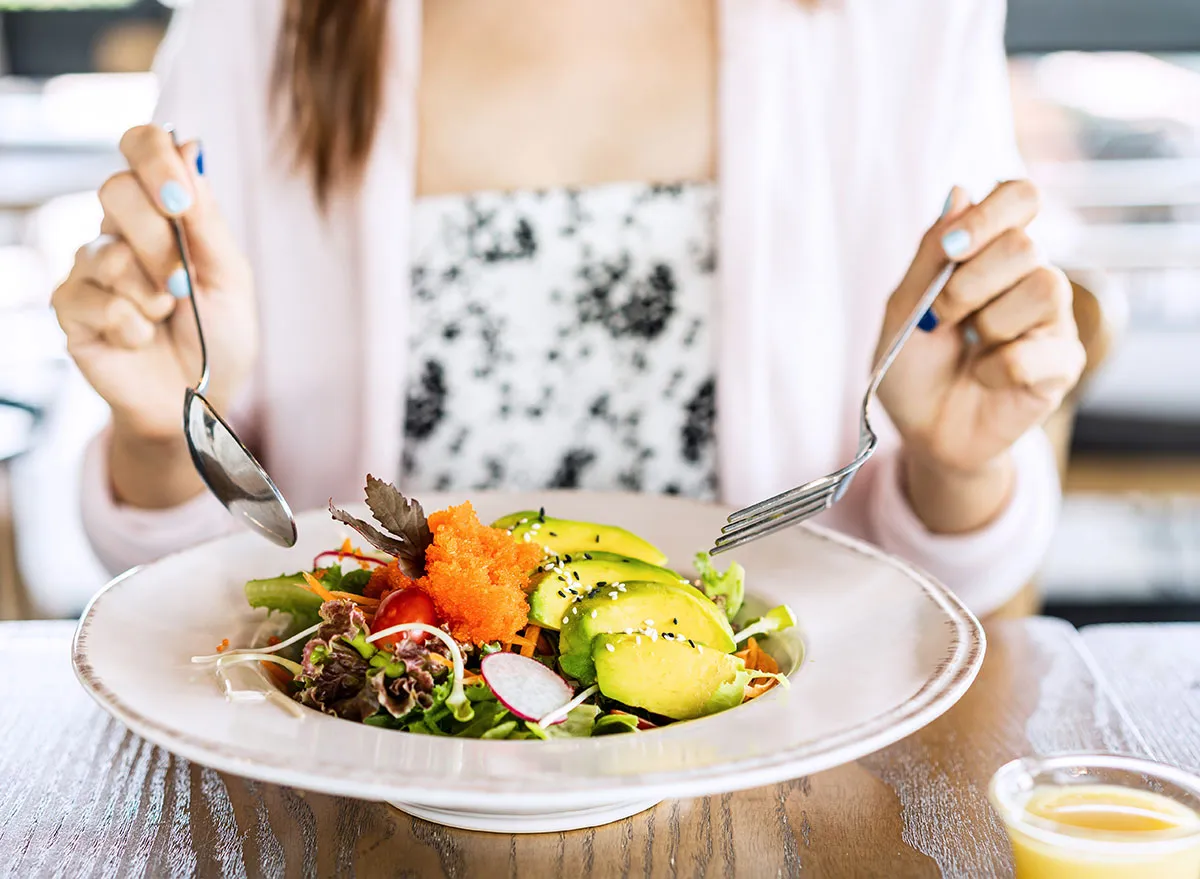
A significant part of your weight loss journey may take place not in your mouth, but in your mind! Evidence shows that bringing mindful awareness to your eating patterns is a useful tool for eating just enough and not too much.
Lacy Ngo, MS, RDN, author of The Nourishing Meal Builder knows firsthand the impact of mindful eating on weight loss.
“I lost 50 pounds when I started eating slowly and really enjoying my meals,” says Ngo. “I put my fork down between each bite and noticed all the flavors and textures of that bite. I didn’t pick up my fork again until I completely finished the bite and took a sip of water. This type of mindful eating is such a simple and effective strategy that increases meal enjoyment and helps with weight loss.”
Don’t over-restrict.
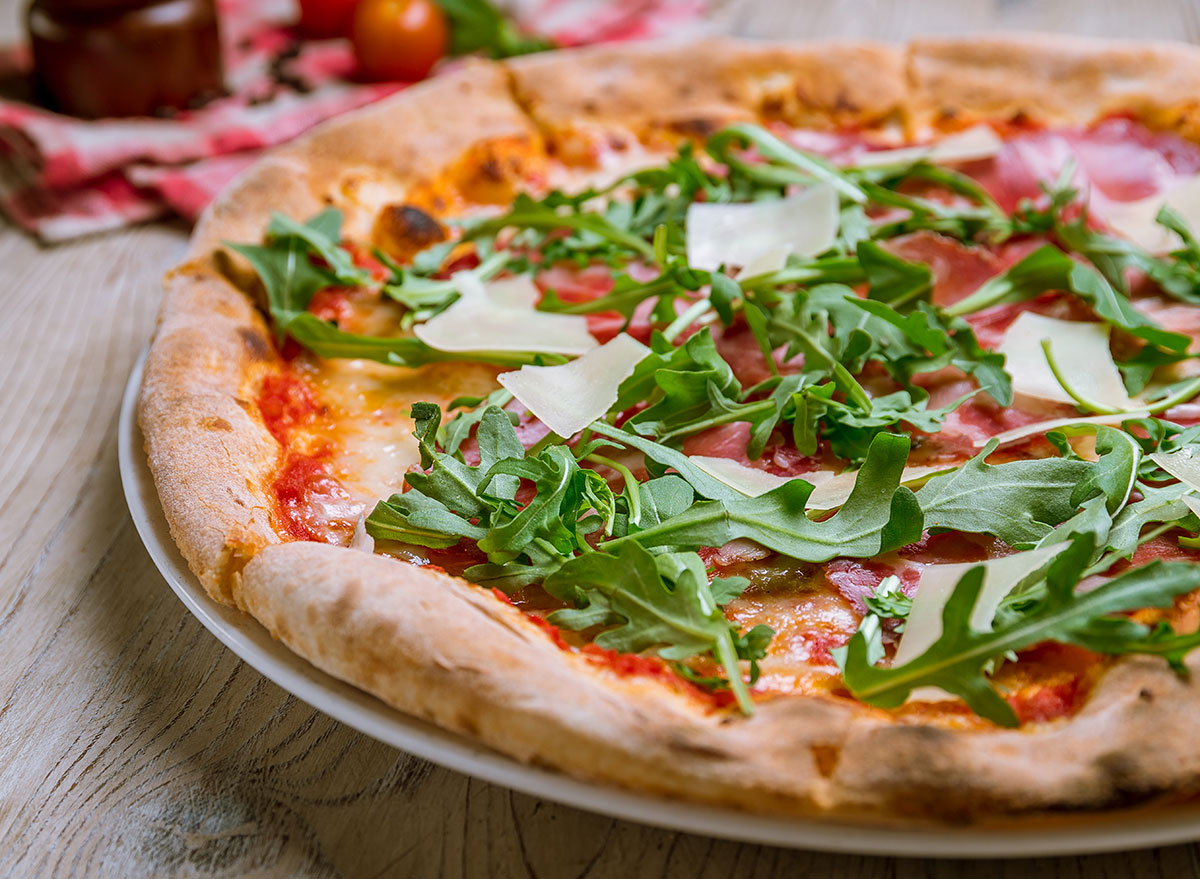
Believe it or not, one key to weight loss may be to loosen your grip on a restrictive diet.
“Being overly restrictive can be a recipe for failure,” says Nicholas. “You’ll likely get burnt out quickly if not making sustainable choices you can live with long-term.” Food is, after all, a major source of pleasure—so go ahead and (sometimes) incorporate the more indulgent foods that bring you joy.
For even more healthy eating habits, read these next:
